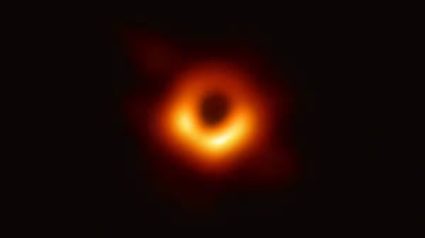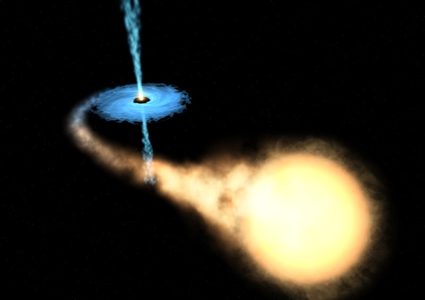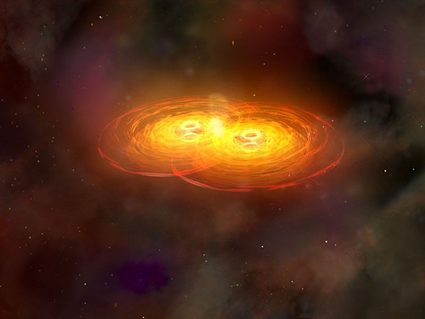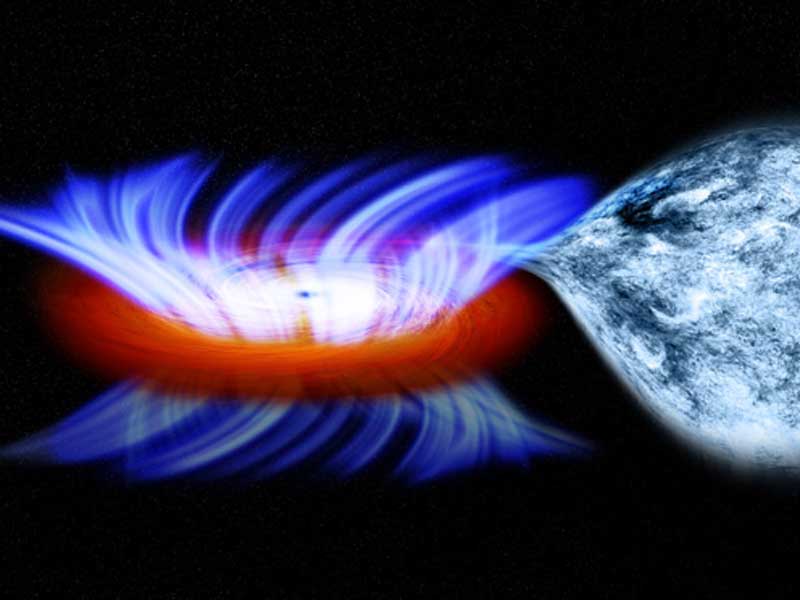Black Hole Collision Calculator
Our black hole collision calculator is here to help you calculate the changes in a black hole's size, mass, and energy liberated when a celestial object like a star collides with a black hole. You're not alone in your curiosity about black holes - they're fascinating! Let's discuss some of the intriguing things we already know about black holes, specifically:
- What are black holes?
- What happens when a black hole collides with a celestial object?
- What happens when two black holes collide?
What are black holes?
Black holes are regions in space with such strong gravitational force that not even light could escape them! At the end of a star's lifespan, it dramatically explodes in one of the brightest astronomical events, rightfully called the supernova, leaving behind any of the three below:
- A white dwarf;
- A neutron star; or
- A black hole
The collapse of a star whose mass is at least 2-3 times our Sun's mass could form a black hole. The gravitational force in such a star's core overpowers all other forces that keep it intact, collapsing all the mass inward into a singular point of immense density. Our existing theories break down at this point, called the singularity, so there is no way of knowing what happens for sure. What we know is that there is a region of space called the event horizon around the singularity. Anything that crosses this horizon is lost forever. We cannot recover any information from it since not even light can escape its gravitational pull (see: escape velocity).
Physicists have theorized about black holes even before Einstein's general relativity, but especially since then! Karl Schwarzschild was the first to provide a solution to general relativity that describes a black hole's event horizon. Learn more about it with our Schwarzschild radius calculator.

What happens when a black hole collides with a celestial object?
Unless an object passes too close, it can safely navigate around a black hole, like any other star. Occasionally, some objects may get too close and pay the price by spiraling into the black hole. Any object falling into a black hole liberates a tremendous amount of energy. The black hole's size and mass will also increase correspondingly.

When a star gets too close, it experiences tidal forces. Essentially, the side closer to the black hole experiences a stronger gravitational pull, while the side away from the black hole feels a weaker pull. Thus the black hole strips all the gas from the star, which spirals into the black hole, forming an accretion disk. The friction between the gas particles spiraling in this disk at an incredible velocity converts some mass into tremendous heat and light energy. The black hole consumes the remaining mass.
Our black hole collision calculator can show you the black hole's mass increase and the energy liberated as light and heat during such an event.
What happens when two black holes collide?

When two black holes get too close together, they spiral towards each other until they finally merge to become a giant black hole. This is how physicists believe supermassive black holes at the cores of galaxies came to be. But, since black holes are incredibly challenging to observe, we've not had the opportunity to witness two black holes colliding yet. However, we have observed something phenomenal that only occurs during such rare cosmic events - gravitational waves!
In 2016, astronomers directly detected gravitational waves for the first time using highly advanced laser technology. This breakthrough came nearly a century after Einstein predicted their occurrence using general relativity in 1916. These ripples in the fabric of space-time originated from the merger of two black holes with over 30 Solar masses each!
Calculating black hole collisions using this calculator
It can seem daunting to navigate our black hole collision calculator, but you'll have so much fun once you get the hang of it:
- The calculator is divided into three tabs:
- Before collision;
- Impacting object; and
- After collision.
- In the
before collisiongroup, provide either the black hole's mass or its event horizon radius before the collision. - Under the
impacting objecttab:- Enter the mass of the impacting object.
- For potential energy calculation: If you know the distance from the object to the black hole, select
yesto enter this distance. Otherwise, this calculator shall assume it starts outside the gravitational reach of the black hole.
- Once you've provided all the values in the first two tabs, the
after collisiontab shows you what happens when the black hole collides with the impacting object. The calculator will determine the following parameters after the collision:- The black hole's mass.
- Event horizon radius and growth as a percentage.
- The energy released in Bethe (or foe). Bethe and foe are units of energy reserved for huge values. 1 Bethe (or foe) = 1044 Joules.
Once you've had your fill of black hole collisions, we recommend you try our gravitational time dilation calculator, a mind-bending consequence of general relativity!

Thank you NASA! (picture not to scale)